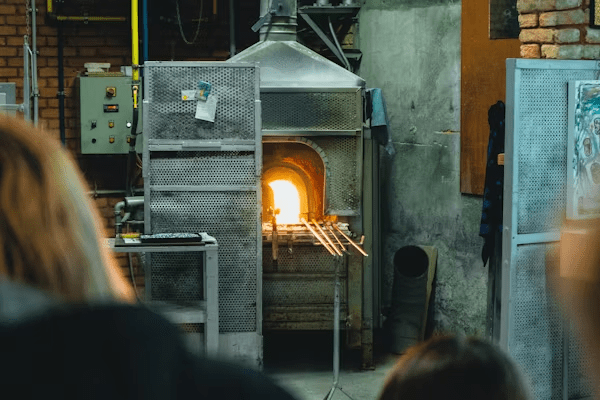In industrial manufacturing, the quality of surface finishing is a key determining factor in a component’s functionality, durability, and reliability. In B2B industries like aerospace, automotive, energy, and medical devices, surface finishing is a crucial factor—not only from an aesthetic perspective, but also in precision, safety, and functionality.
A silica sol investment casting factory provides a unique answer to this problem in the industry by designing castings to provide excellent surface quality and dimensional precision. In particular, working with the right lost wax casting manufacturer helps industries drive great results in operational efficiency and cost savings. This article aims to show why such factories are the go-to option for high-performance manufacturing by detailing the operational methods, materials, value-adding features, and quality steps they implement for finishing surface excellence.
It’s worth noting that one sentence in this article contains both keywords: “A silica sol investment casting factory and a lost wax casting manufacturer collaborate to provide components that integrate precision engineering and an extraordinary surface finish.”
Learning About Silica Sol Investment Casting
Investment casting, commonly referred to as lost wax casting, is a technique that enables manufacturers to intricately and accurately fabricate complex metal parts. Incorporating silica sol into investment casting has the added benefit of improving surface quality, minimizing defects, and enhancing dimensional stability.
Silica sol is a colloidal dispersion of silica. It is used in the form of a fine slurry on wax patterns during the mold construction phase. As a result, the investment casting molds are less porous and smoother, allowing for a superior surface finish on the casting.
For B2B buyers sourcing components for industries that demand precision, knowing how a silica sol investment casting factory functions is important. This is because the process has some noteworthy advantages compared to other manufacturing methods, including:
- Less surface roughness
- Increased tolerance and precision
- Decreased need for post-processing
- Enhanced reproducibility for large-scale production
As a result, the production investment casting of silica sol is ideal for parts with complex geometries, high tolerances, and excellent surface quality.
The Impact of Silica Sol on Surface Finishing
Finish quality is vital to the functionality of parts. This is because surfaces that are smooth enough can lower friction in parts, reduce wear, improve resistance to corrosion, and enhance a product’s aesthetic value.
Such advantages accrue from the casting of silica sol because:
- Nanoparticle Coating: Silica sol contains nanoscale silica particles that form a very fine, uniform, ceramic layer on the mold surface.
- Dense Ceramic Shell: Surface irregularities are minimized with multiple, built, dense ceramic shells.
- Thermal Stability: Silica sol molds hold their shape when hot, leading to fewer defects from mold distortion.
Surface Reproducibility: The quality invariance of a coatings made from silica sol leads to consistent Silica sol and thus repeatable quality coatings silica sol produces.
Improvements to Surface sol finishing brings B2B manufacturers higher value with greater operational efficiency and lower finishing costs all while defect production value is lower.
Silica sol investment casting produces a Surface quality to a similar standard of precision machining and is therefore highly valued as a machining method in industries where precision and tight tolerances is a requirement.
The Production system of Silica sol investment casting
A silica sol investment casting factory is able to produce superior Surface finishes due to a value adding and consistent sequence of operations. B2B buyers from value adding lost wax casting manufacturers should receive a copy of this explanation.
Wax Pattern Fabrication
The creation of a wax pattern which is an exact replica of the final part constitutes the beginning of the process. Wax patterns can be produced from the injection molding process or other precision fabrication methods which promote Surface quality consistency and therefore accuracy. These patterns form the base of the system mold.
Application of Silica Sol Coatings
Following the preparation of the wax pattern, it is again coated using a silica sol slurry. In the intervals, fine refractory materials like zircon or alumina are sprinkled. Each coating is meticulously dried to form a cohesive, resilient, and smooth ceramic shell. This approach is crucial to achieving the desired finish on all surfaces.
Dewaxing Process
Once sufficient ceramic layers have been built, the shell is dewaxed. In this case, the wax is removed and melted out, leaving a ceramic shell precisely aligned with the wax pattern. This is a crucial step in eliminating wax surfaces that hold onto defects.
Firing the Mold
To increase the strength of the ceramic mold and burn out any residual organics, it must be fired at high temperatures. This also prepares the mold to withstand molten metal temperatures without warping.
Metal Pouring
The fired ceramic shell is poured with molten metal. Thanks to the high quality of the silica sol mold, molten metal is sure to uniformly fill the cavity, resulting in a casting with an excellent surface finish and precise dimensions.
Finishing and Inspection
After the casting process is complete and the part cools down, the ceramic shell is removed to reveal the part that has been cast. Remaining steps such as heat treatment, grinding, or machining may be needed. Nevertheless, the high surface quality that comes with silica sol investment casting tends to lessen the amount of finishing needed. This, in turn, saves time and money.
Quality Control and Standards
In B2B manufacturing, the reputation of your lost wax casting manufacturer and silica sol investment casting factory relies heavily on the quality of the components. For this reason, outsourcing such components should come with guaranteed quality control to ensure the components are consistent to be used reliably.
Some of the most common quality control practices that may be expected include:
- Surface Roughness Testing:
- Dimensional Verification:
- Non-Destructive Testing (NDT):
- Chemical Analysis:
- Microstructural Analysis:
These quality measures ensure that the finished components are of the required quality in the aerospace, medical device, and precision engineering industries.
For B2B managers, such dependability means assurance, low scrap, and optimal productivity.
Advantages for B2B Businesses
Engaging with a silica sol investment casting factory and the appropriate lost wax casting manufacturer can be beneficial for the businesses that make high-precision components.
Enhanced Surface Quality
Silica sol casting achieves a greater degree of smoothness and lower levels of porosity. These qualities directly contribute to the performance and durability of the product.
Reduced Post-Processing
Silica sol casting’s ability to generate higher quality surfaces to the extent that the need for supplementary operations, such as machining and polishing, is reduced to the extent that the time and costs of the overall process are able to be significantly reduced.
Production of Complex Geometries with High Precision
The ability to create and maintain high levels of intricacy and accuracy is crucial to the industries that use investment casting and are highly competitive in terms of design complexity.
Production Consistency
The reproducibility of silica sol molds allows for consistent results across production batches, which is essential for large-scale manufacturing.
Competitive Advantage
Manufacturers are able to finish parts to a higher standard with reduced levels of finishing, making them more competitive in terms of quality, cost, and time to market.
B2B businesses make silica sol investment casting a vital part of their manufacturing processes because of the advantages it offers.
Conclusion: Strategic Partnering for Superior Results
Establishing a silica sol investment casting factory is another milestone in precision manufacturing. Advanced material integration, thorough processes, and quality control ensure castings are delivered with exceptional surface finishing and dimensional precision.
Choosing the right lost wax casting manufacturer is a necessary and profitable decision in a B2B context. It is a way for a company to enhance production efficiency, improve product quality, and increase competitiveness in the market.
In industries where precision, quality, and consistency are paramount, the capacity to create exceptional parts requiring minimal finishing is a formidable asset. Partnering with a manufacturer specializing in silica sol investment casting goes beyond just component sourcing—it is a collaboration where both parties gain improved production.
There is a silica sol investment casting factory and a lost wax casting manufacturer collaborate to create components that pair cutting-edge engineering with surface finish quality, forming vital partnerships in high-value production for high-tech industries.





























